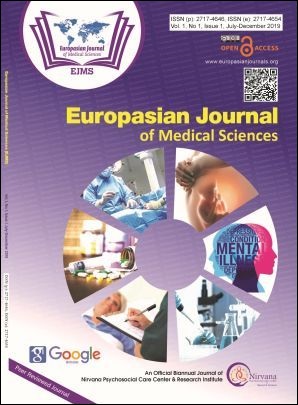Photographic Analysis of Aesthetically Pleasant Facial Profile in Aryan Group of Nepalese Population
Keywords:
Aesthetically, Facial profile, Photographic analysis, PleasantAbstract
Background: Facial aesthetics has been considered as the most significant factor for individual. The aim of the study was to identify the standard linear and angular measurement of facial profile in Aryan group of Nepalese population so as to set up aesthetic treatment goal.
Methods: A cross-sectional observational study was done in fifty-seven subjects (27: females and 30: males, from 17-30 years). The landmarks were marked and two most commonly used lines were taken as reference lines E-line and S-line and seven facial angles were measured: Total Facial Convexity Angle (G-Prn-Pog), Facial Convexity Angle (G-Sn-Pog), Nasofacial Angle (G-Pog-N-Prn), Nasolabial Angle (Ls-Sn-Cm), Mentolabial Angle (Pog- B-Li),Nasofrontal Angle (G-N-Nd) and Nose tip Angle (N-Prn-Cm).Data was analyzed using Statistical Package for the Social Sciences (SPSS) 21. To assess anterior-posterior relationship of upper and lower lips judged by E-line and S-line were determined using correlation co-efficient (r). Likewise, to compare the angular measurement between males and females were determined using Mann-Whitney U test.
Result: The anterior-posterior position of upper lip and lower lip judged by E-line were -3.78±0.67 mm and -1.92±0.61 mm respectively whereas upper and lower lips judged by S-line were 0.18±0.58 mm and 0.06±0.44 mm respectively. Statistically significant (p<0.001) strong correlation(r) was found between upper lip to E-line and S-line (0.999) and between lower lip to E-line and S-line. Out of seven angular parameters, four parameters showed gender dimorphism which means statistically significant difference (p<0.001) were seen in Nasofrontal Angle.
Conclusion: Either one of the reference line can be used for evaluation of facial profile at the time of diagnosis. The parameters calculated by photographic analysis serve as a comparing guide for setting up aesthetic treatment plan and can be used both before and after orthodontic treatment.
Downloads
Downloads
Published
How to Cite
Issue
Section
License
The author(s) retain the ownership of the copyrights for their work published in EJMS without any restrictions. Upon submission, the author(s) grants EJMS a license to publish, including to display, store, copy, and reuse the published content.
License to Publish
By submitting a manuscript to EJMS, the author(s) grant the journal a non-exclusive license to:
- Publish and distribute the content in all formats, media, and platforms (both existing and future), while identifying EJMS as the original publisher.
- Reproduce, display, and store the content in both print and online formats, including institutional and digital repositories.
- Translate, adapt, and summarize the work, including reprints, extracts, and abstracts.
- Develop derivative works based on the original content.
- Include the work in electronic databases and provide links to third-party materials.
Creative Commons Licensing
In addition to EJMS’s publishing rights, authors grant third parties the right to use, share, and distribute their work under the Creative Commons Attribution 4.0 (CC BY 4.0) International License. This allows unrestricted use of the content, provided proper attribution is given to the original author(s) and the journal.

